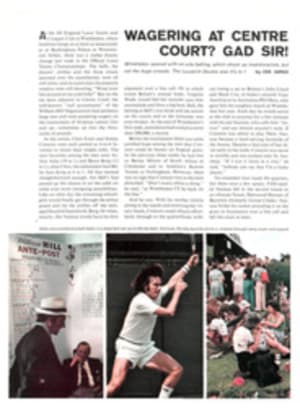
A LONGTIME CHALLENGER OF DOGGY DOGMA GOES TO TOWN ONCE MORE
For more than a decade amateur dog trainer Richard Wolters has been debunking the hallowed tenets of professional dog training. In 1961, in his Gun Dog, now in its 23rd printing, Wolters recommended that a dog's training begin at the tender age of 49 days—the precise time animal behaviorists have found that a dog's learning processes become active—instead of waiting the customary year. While the experts fussed, Wolters went on to prove his point by turning spring puppies into working bird dogs by fall.
Gun Dog, concerned with the pointing breeds, was followed by Water Dog, which applied Wolters' techniques to the retrieving breeds. Wolters also produced Family Dog and Instant Dog. Now comes perhaps the most revolutionary of all his training books, City Dog (E.P. Dutton & Co., $7.95).
Much of City Dog draws upon the common sense training techniques advocated earlier, but here Wolters adapts the basics to specific city situations, and in so doing continues to shock experts. For example, everyone knows that big dogs do not belong in little apartments. Not so, says Wolters, any more than big men must be ruled out of small studios.
"Dogs come in all shapes and sizes, just like people," Wolters says. "A city slicker doesn't pick a husband or wife by size.... Why should it be any different for dogs? A good dog, like a good spouse, will adapt to any reasonable living conditions if there is a little love and affection in the living."
The good in that sentence is significant. Wolters has decided opinions as to which breeds make good city dogs, especially if there are children in the family. Bassets, beagles, Brittany spaniels, English setters, Labradors and pointers are listed on Wolters' good list. His bad list includes such favorites as the cocker spaniel, Chihuahua, dachshund, Scotch terrier and Yorkshire. Wolters' judgments are based on temperament, on how much care a breed demands and how easy it is to train.
"People in an area develop the type of dog that fits their personality," he writes. "Mid-European or German dogs are one-man, hard-headed animals who need a firm hand in training. These 'Prussian' dogs are very different from English dogs. Like their owners, English dogs tend to have a quiet dignity and to be good-natured." If you are still in doubt about the breed to choose after reading the book, Wolters suggests that you stand in front of a mirror and study your image. Under no circumstances should you let children make the choice.
Wolters' most interesting advice concerns training the city dog to protect his master. What the average city dweller needs is not an attack dog but an alarm dog, one that will bark and lunge menacingly when given a secret command, such as clearing one's throat. A dog so trained—and City Dog provides step-by-step instruction requiring only 10 minutes a day—is safe enough to be controlled even by a small child.
Wolters, a graduate chemist before he became an art director and media consultant, is also a fisherman, glider pilot, balloonist and photographer—a thoughtful man, which makes for a thoughtful book.

